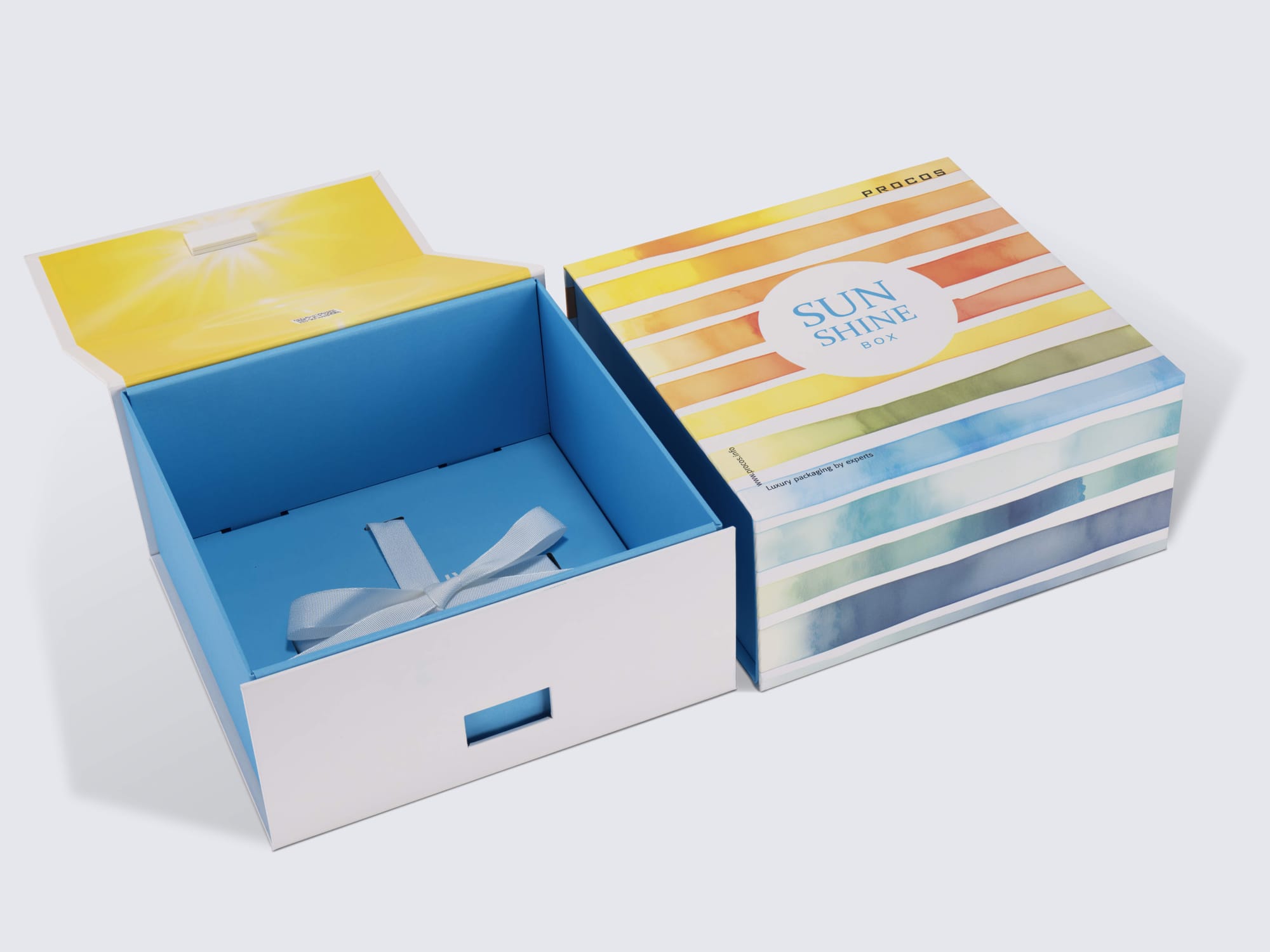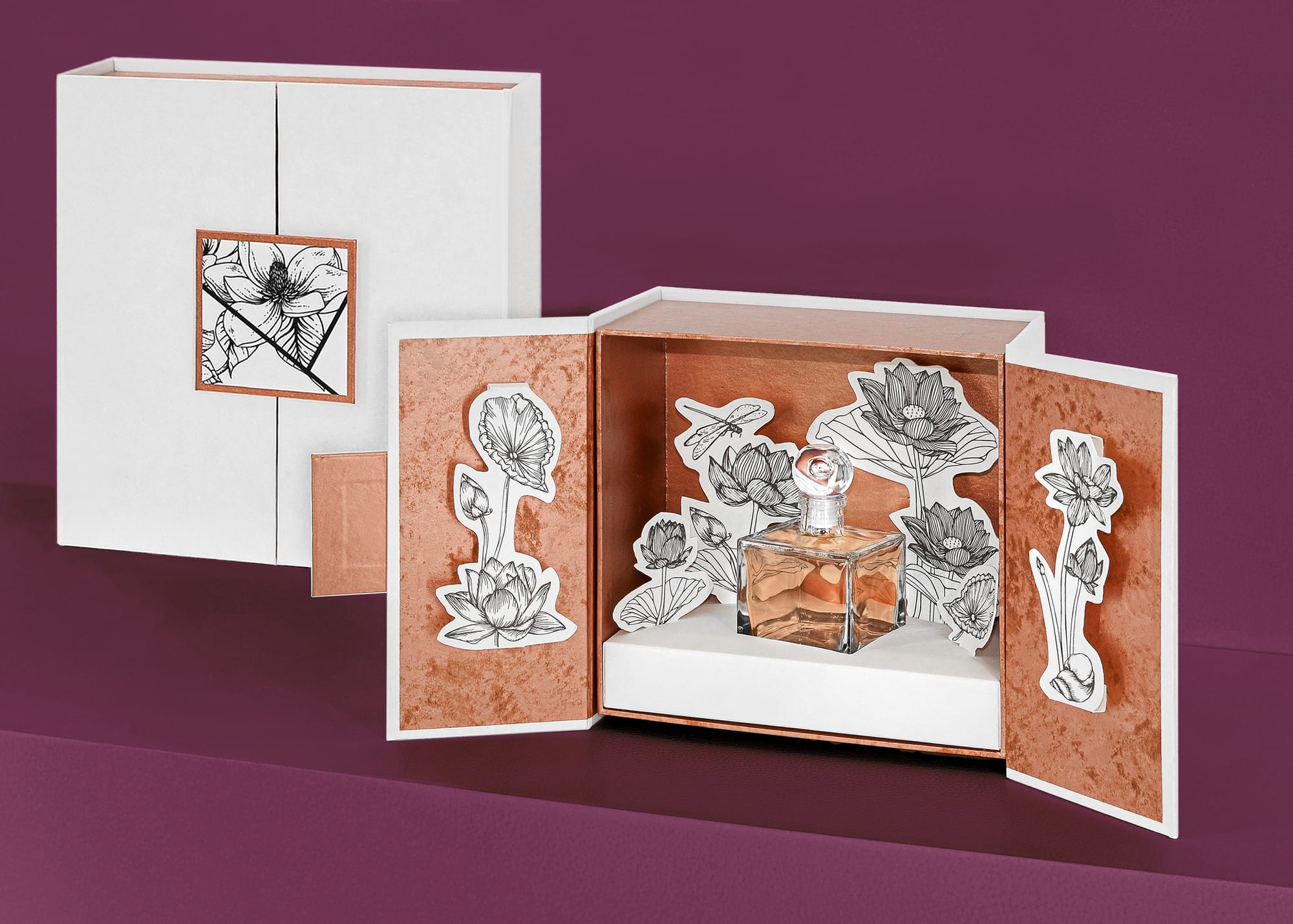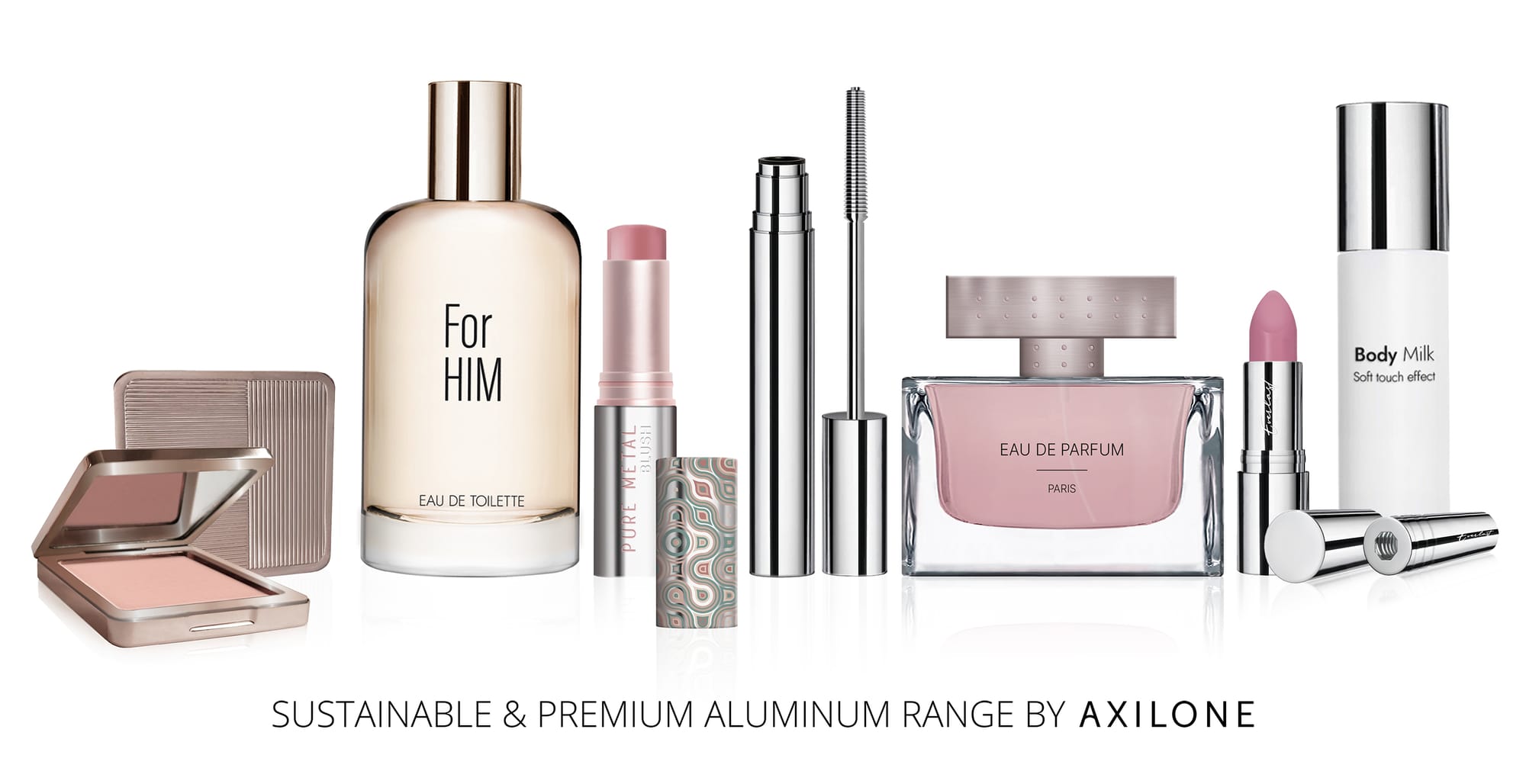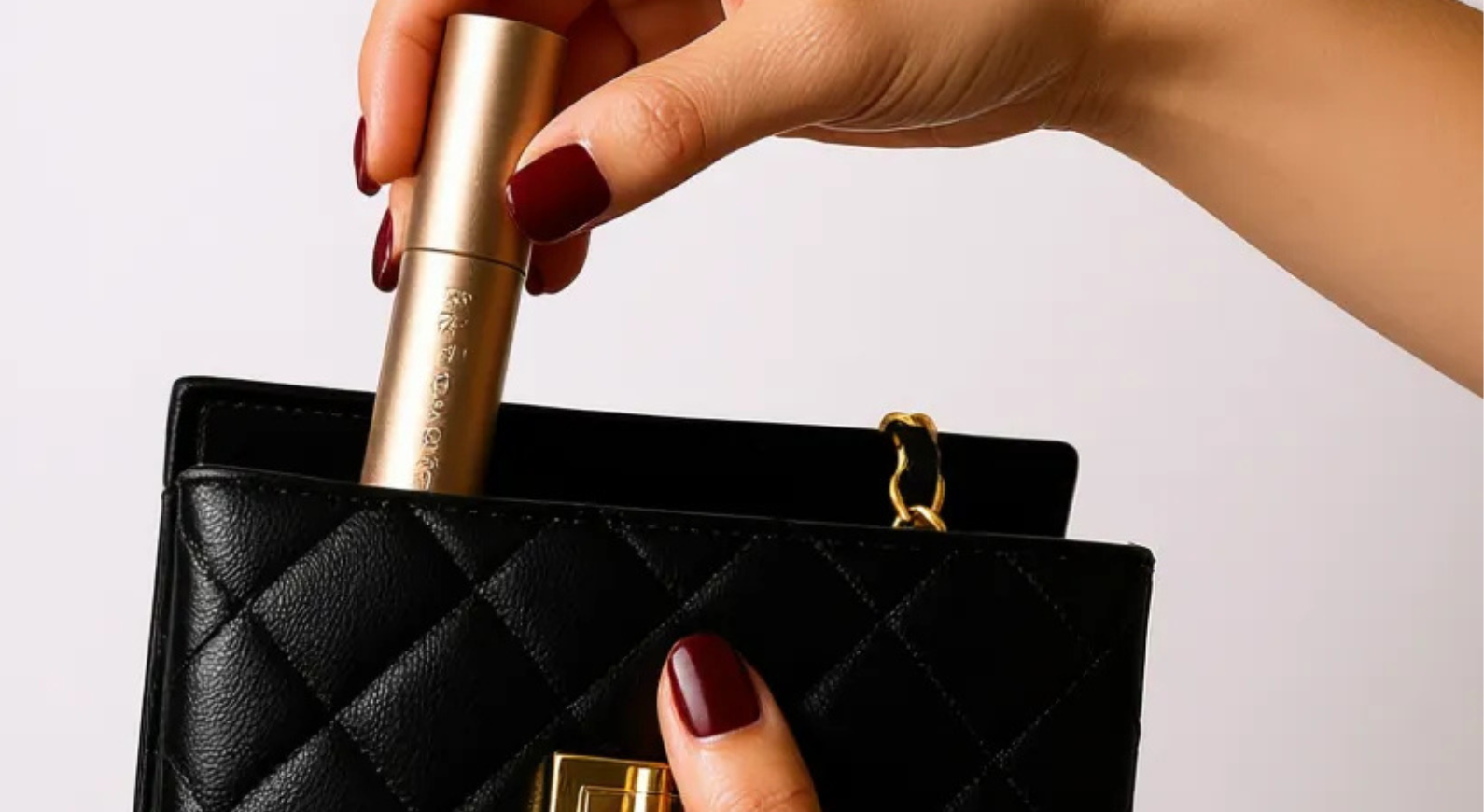
Updated box by Procos, 3D cardboard by Rissmann, and low-carbon aluminium by Axilone
Procos has updated its iconic eco-responsible Yoga box (mono-material) with an optimised design, Rissman has developed an innovative FSC cardboard and paper design in 3D, and Axilone has partnered with Aludium to reduce its carbon footprint compared to the European average significantly.
Created in 2020, the Yoga Box and its Yoga Light version are characterized by an eco-responsible approach based on, among other things, lightness and material economy. Both are made of cardboard: grey cardboard for the Yoga Box and lighter corrugated cardboard for the Yoga Light. In pursuit of a mono-material packaging solution, Procos replaced the magnetic closure with a paper tab.
For its 2024 version, with its new SUNSHINE variant, Procos optimised its mono-material closure system for even smoother and easier handling, and a more elegant design. The closure system is completely invisible from the outside. It consists of a cleverly designed notch on the front wall inside the box, combined with a bevel button that fits onto it. Finally, the 2024 SUNSHINE BOX and its light version includes a tray serving as a product holder, secured by two Tencel® ribbons.

Rissmann designed a 3D box that tells more than a story while demonstrating its commitment to reducing its impact through the 3R lenses.
Rissmann has designed a presentation box made of FSC cardboard and paper, mainly intended for home fragrance bottles. The box unveils a 3D décor upon opening and at the point of sale.
The experience starts even before discovering the product and its 3D world.
Brought to life by fully customizable paper elements, an imaginative world awakens the senses and invites the customer to travel and dream, in the manner of “augmented” reality. Through this exceptional box, they can tell the story of their olfactory creation perfectly showcased.

Rissmans's 3R approach
Reduce: designed to ensure the company focuses on using ONE material, most of the time paper/cardboard, FSC certified, from sustainable and responsible forestry. The transfer finishing is being designed to make sure that the printed area remains under 70 % of the entire surface.
Recycle: packagings are made from ecofriendly paper and cardboard material. Mineral oil free offset printing colors and waterbased varnish can be used for most of the designs. Transfer finishing do not include toxic additives.
Reuse: packagings are made to be reused, whether as a storage box, design element, personalized gift box or for thousand other possibilities.
Axilone and Aludium introduce a low-carbon aluminium to the cosmetic market, significantly decreasing its carbon footprint compared to the European average. A reduced carbon footprint by over 24% compared to the average carbon footprint for primary aluminium [1] sold in Europe [2]. Compared to primary aluminium produced in China, it results in an average carbon footprint reduction of 76% [3].

Axilone will utilize Aludium's leading, certified, and independently verified low-carbon aluminium for their cosmetic packaging components.
ECO P7 Aluminium generates less than 7 tonnes of CO2 equivalent per tonne of aluminium, from raw material extraction through to delivery [4]. This reduction is achieved through a combination of a controlled production process and the careful selection of low-carbon primary aluminium. The GHG emissions produced by this enhanced generation of aluminium are verified by a third party and certified in accordance with ISO-14067-1:2018 and the Greenhouse Gas Protocol Standards. This certification process has been rigorously executed to provide full transparency of the aluminium carbon footprint.
sources
[1] Primary aluminium is produced from alumina, typically by electrolysis, and with an aluminium content of 99,7%. Primary aluminium excludes alloying additives and recycled aluminium possibly include a small amount of runaround scrap. (Source: Global Advisory Group GAG – Guidance “Terms and Definitions” – 2011-01 and The International Aluminium Institute (IAI)).
[2] Rolled product produced using primary aluminium used in Europe: 9.2 tonnes CO2 eq/tonnes semi-finished rolled alu (source: 2018 EA Environmental profile report). (<> 24 % reduction in tons CO2 eqv)
[3] Rolled product produced using China primary aluminium: 28.6 tonnes CO2 eq/tonnes semi-finished rolled alu, (source: 2018 EA Environmental profile report and The International Aluminium Institute) (<> 76 % reduction in tons CO2 eqv)
[4] The new technology also known as Aludium Eco Brand P7, is cradle-to-gate including Scope 1, Scope 2, and Scope 3 emissions meaning that less than 7 tonnes of CO2 is produced per tonne of semi-finished aluminium.

